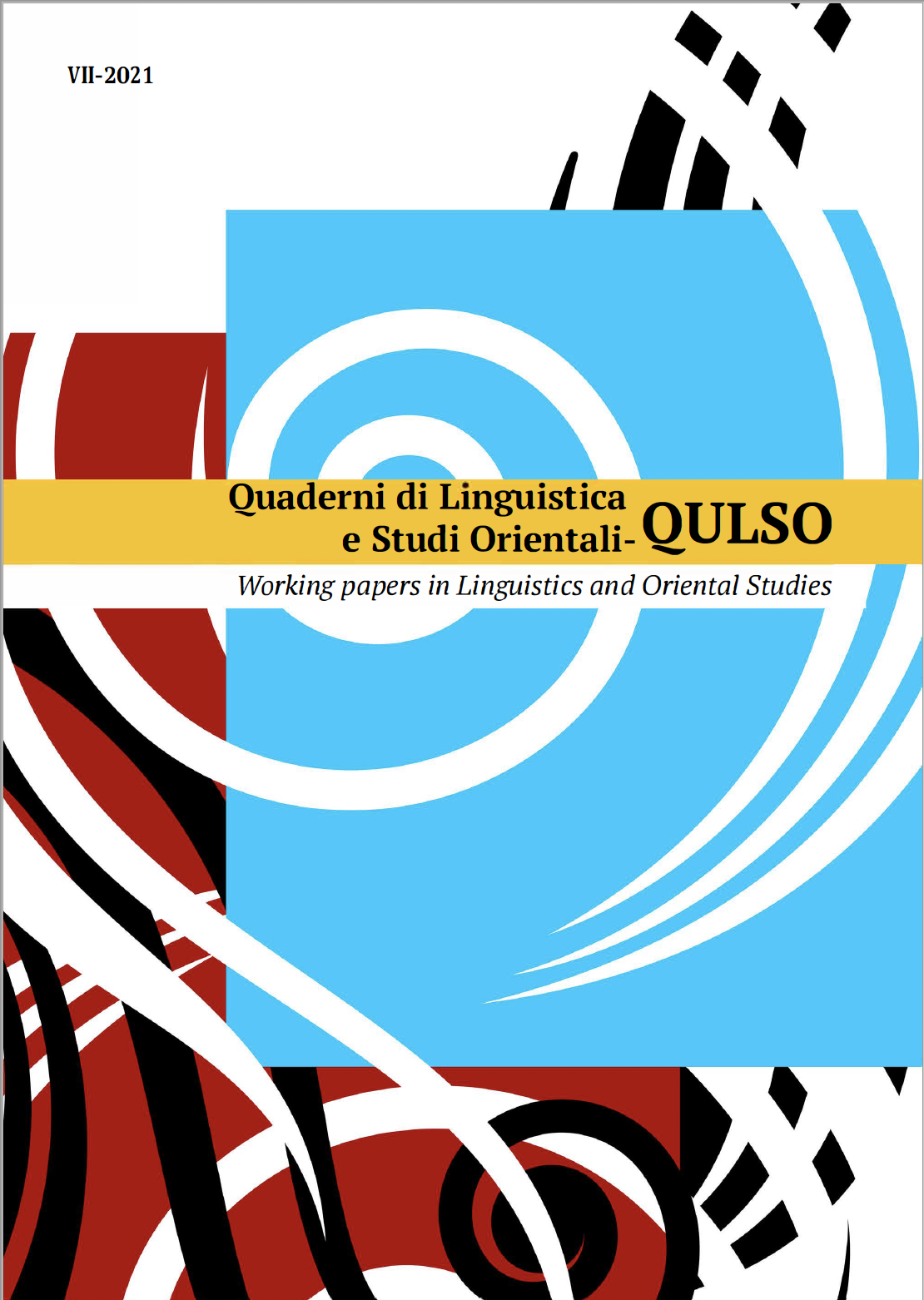Negotiation in Chinese as a foreign language: Italian learners’ signal strategies in a tandem-learning context
Published 2021-09-15
Keywords
- Chinese a foreign language,
- Clarification requests,
- Comprehension checks,
- Negotiation of meaning,
- andem language learning
How to Cite
Abstract
Negotiation of meaning, the process through which the speakers go to clearly comprehend one another, is believed to facilitate acquisition as it provides learners with situated comprehensible input as well as opportunities to produce pushed output. Nevertheless, negotiation is still an under-researched area in Chinese as a second or foreign language. This study analysed the strategies used by learners to signal non-understanding and the linguistic resources they exploit to achieve this goal. The participants were 13 Italian learners who took part in a three-month face-to-face tandem language learning program with 6 native speakers of Chinese. The interactions were recorded and transcribed, and the produced signals were classified according to strategy, form, and language type. The sequential position of strategies in the negotiation routines was also annotated. Empirical evidence shows a strong preference for repetitions and a frequent code-switching to Italian. A clear preference in the sequential distribution of clarification requests and confirmation checks also emerged, the former being mainly used to initiate negotiations routines, and the latter mostly occurring in routine reiterations.



